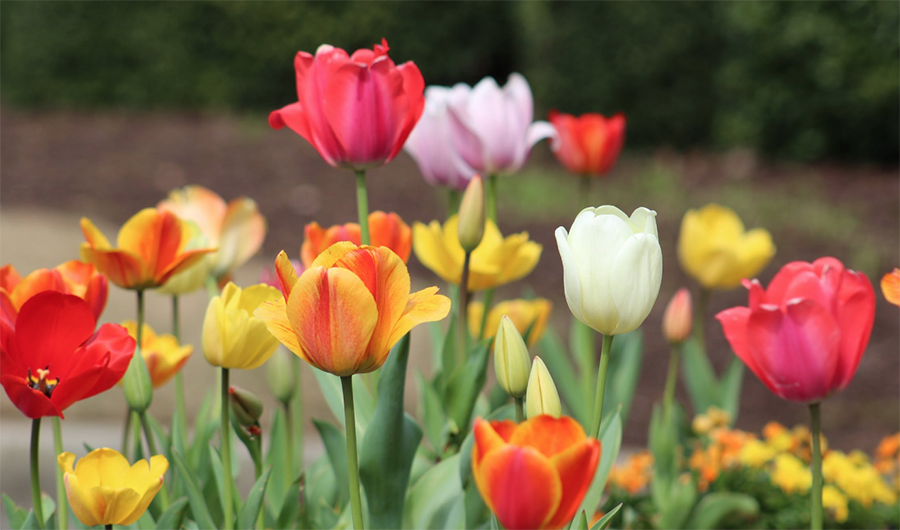
All winter, you waited. Through the cold, you waited. Through the snow, through the ice, you waited. Then, finally, it happened. Spring! A breath of sun warming your heart and finally getting you to venture outside and into the garden. That garden looked beautiful, too…for about a week. Without warning, Maryland did its seasonal thing and fast-forwarded to summer. Now your soil is dry, your plants are drooping, and you are left wondering how to care for perennials in the summer months.
Here are a few tips to keep your garden beautiful, even in the summer heat!
1. Watering Properly
This may seem like a no-brainer, but fight perennial droop with the right amount of water, at the right time, and at the right depth.
Water whenever the soil feels dry at a depth of one to two inches, and make sure to water at the root rather than the leaf. It’s generally recommended to water before the heat of the day, or in the evening.
2. Stake Them Out
If your tall plants are drooping, you can consider tying them to stakes to keep them upright and healthy. While this is normally done in the spring, it’s not too late.
3. Mulch and Weed
Weeds are bad news. Did you know weeds will compete with perennials for the valuable moisture in your soil? Let weeds go, and they multiply overnight. When they go to seed, they will take over your garden. Weeds also encourage pests and diseases.
Battle weeds by pulling them, then adding a layer of mulch. Mulch not only helps control weeds, it also conserves water within the soil, increases the quality of your soil as it decomposes, and keeps roots cooler.
You may need to assess older mulch currently covering the perennials to make sure the plants are breaking through it and to ensure the mulch is not harboring pests or fungus.
4. Prune Your Early Bloomers
Perennials tend to follow schedules. Tulips, for instance, are the first flower you’ll see in the spring…and the first to fade away. Cut your faded plants to ground level so they will grow back the following year.
5. Deadheading
Deadheading is the process of removing faded flowers from a perennial to encourage it to continue blooming. Once the plant has stopped blooming, you can cut the entire perennial back to an inch or two above the ground.
6. Fertilize the Right Way
There are two schools of thought on fertilizing in the summer: do it because your plants need it, or don’t do it because it’s too dangerous for your perennials.
The simplest solution is to fertilize if your plants need it, and to do it in a safe way.
- Use only organic slow release fertilizer
- Use less fertilizer than you would in the cooler months
- Don’t fertilize your perennials directly around the roots
7. Choose the Right Perennials for Your Soil and Sun Exposure
Perennials are a great way to add low-maintenance plantings to your gardens with reliable blooms and greenery that come back year after year. You can diversify your garden by mixing annuals to your landscaping plans.
Make sure your plants are in the right locations to keep them healthy and beautiful all season by reading their tags and planting them in the right spots in your gardens. Some plants thrive in the heat and direct sunlight, while others do better in shady areas or sandier soil.
At RELS, we have a great selection of perennials, and our friendly experts can help you choose the best plantings for your landscaping dreams and help you care for your perennials through the summer months. Contact us for all your garden needs, from mulch to hardscape materials, topsoil and plants.
